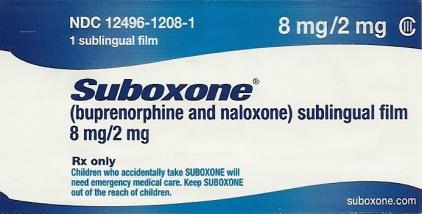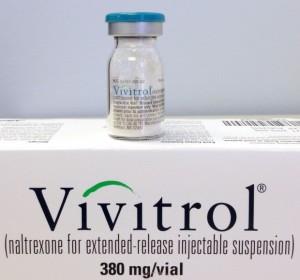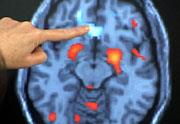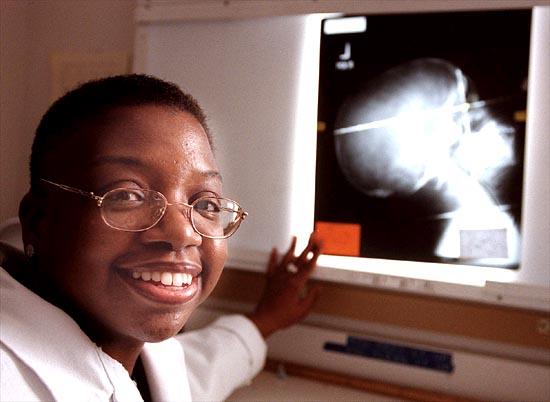Slide






County Behavioral Health Directors Association of California
Medicines Used in the Treatment of Substance Use
Disorders: Implications for Integrated Behavioral Health
December 11, 2015
Mark Stanford, PhD
Sr Director of Integrated Behavioral Health
Encompass Community Services
Associate Professor Neuroscience, Cabrillo College
Clinical Consultant for Stanford University School of Medicine
Dept of Psychiatry and Addiction Medicine
"The greatest problem with pharmacotherapy is the continued myth and misunderstanding about its effectiveness in recovery."
David Mee-Lee, MD
Objectives for this talk
Review the basic neuroscience of substance use
disorders that provides the foundation for evidence-based treatments.
Review the medicines used in the treatment of
substance use disorders.

Speaker Disclosure Statement
NOTHING TO DISCLOSE

In just the last 15 years, advances in science have revolutionized our fundamental views of substance use disorders and allowed for the development of improved treatments!
Methamphetamine use
Research shows that . .
Prolonged Drug
Use Changes
the Brain
in
Fundamental
and Lasting
Ways
methamphetamine
addicted brain
And there is scientific evidence that these changes can be both structural and functional.
Persons with SUDs are not a homogenous group of people who use/drink in excess
Rethinking the "drug abuser"
Which person below represents those with a greater frequency of substance use disorders?
SUD Diagnostic Considerations
• C = Control • C = Compulsion • C = Continued use despite consequences • C = Craving
Koob, G. Scripps. 2014
Substance Use Disorders and the DSM-5
• Substance Use Disorders now seen along
a continuum of severity, from mild misuse to a severe state of chronically relapsing, compulsive use (aka, "addiction").
• No longer the diagnoses of "abuse" or
"dependence"
• No use of the term, "addiction"
associated with substance use disorders.
Levels of Severity
0-1 of the 11 criteria: No Diagnosis
2-3 criteria: Mild (akin to the old "abuse")
4-5 criteria: Moderate (akin to old "abuse"
or "dependence")
6 or more: Severe (akin to old
Risk Factors for SUD
• Biological: Genetics account for 50-75%
• Psychological: Mental illness, temperament
• Ecological: Social networks, employment
Lembke A, et al. Stanford. 2014. Ling W, et al. UCLA 2012.
Evidence-Based Treatment:
The National Quality Forum
The National Quality Forum (NQF), dedicated to improving the quality of health care in the United States, has identified and endorsed 8 evidence-based standards of care for the treatment of substance use disorders:
1. Screening & case finding
5. Withdrawal management
2. Diagnosis & assessment
6. Psychosocial interventions
3. Brief intervention
7. Pharmacotherapy
(methadone, buprenorphine,
naltrexone, acamprosate, etc.)
4. Promoting engagement in
8. Continuing care management
EBPs in SUD Tx
Behavioral
• Motivational Interviewing/Brief Intervention
• Contingency Management
• Cognitive-Behavioral Coping Skills Training
• Couples and Family Counseling
• 12 Step Facilitation Therapy (12 step meetings can be important peer recovery
support but themselves are not tx)
• Screening, Brief Intervention and Referral to Treatment (SBIRT )
• Opioid Overdose Prevention Programs
Medication-Assisted Treatment (coupled with behavioral treatment)
• Methadone, Buprenorphine (Subutex and Suboxone)
• Naltrexone (oral and extended release, i.e. Vivitrol)
• Naloxone (for overdose prevention)
• Campral (acamprosate)
• Antabuse (disulfiram)
• Gabapentin
MEDICINES IN THE
TREATMENT OF ADDICTION
A continually growing formulary
Methadone, buprenorphine, naltrexone
Naltrexone, nalmefene, disulfiram,
acamprosate, odansetron, topiramate
Nicotine replacement (gum, patches, spray),
Rimonabant, neurontin (off label)
None to date (2 in the pipeline – naltrexone,
How can medications help treat
substance use disorders?
Different types of medications may be useful at different stages of treatment to help a patient stop compulsive illicit drug use, stay in treatment, and avoid relapse.
Treating Craving and Withdrawal. 2 precursors for continued
use despite adverse consequences. Severity of craving and withdrawal vary
person to person.
Staying in Treatment. Some treatment medications are used to help
the brain adapt gradually to the absence of the abused drug. These medications
act slowly to treat cravings and to have a calming effect on body systems.
Preventing Relapse. Science has taught us that stress, cues linked to
the drug experience (e.g., people, places, things, moods), and exposure to
drugs is the most common triggers for relapse. Medications are being
developed to interfere with these triggers to help patients sustain recovery.
Neuroadaptation and Craving Behaviors
The neural basis for craving may be related to post synaptic
receptor sites as an adaptive response to drug-induced
neurotransmitter levels.
Opioid Withdrawal
• Severe flu-like symptoms • Anxiety • Hyperactivity • Lacrimation/Tearing • Rhinorrhea • Anorexia • Nausea • Vomiting • Diarrhea • Myalgias • Muscle spasms
Goals of Medication in the
Treatment of SUD
1. Abstinence (or reduction) of compulsive illicit use
2. Treat and/or prevent withdrawal symptoms
3. Reduce cravings
4. Diminish "the high" / make it less worthwhile
5. Minimize relapses time and intensity
6. Treat comorbid disorders
7. Stabilize to enhance counseling therapy
Disulfiram (Antabuse)
Disulfiram is used to treat chronic alcoholism. It causes unpleasant effects when even small amounts of alcohol are consumed including headache, nausea, vomiting, chest pain, weakness, blurred vision, mental confusion, sweating, choking, breathing difficulty, and anxiety. These effects begin about 10 minutes after alcohol enters the body and last for 1 hour or more.
The medicine works by inhibiting
liver enzyme - aldehyde
dehydrogenase (ADH), thereby
increasing acetaldehyde.
Naltrexone for Alcohol Dependence
For alcohol dependence, research has shown that opioid antagonism diminishes craving for alcohol and leads to a greater ability to resist urges to drink excessively.
3 kinds of effects: 1)Anti-craving, 2) increased number of days abstinence, and 3) reduced number of days of drinking if a relapse does occur.
Naltrexone is available in two forms: oral daily form (ReVia®, Depade®) and injectable monthly extended-release form (Vivitrol®). The later was approved by FDA for treatment of alcohol dependence in 2006.
Anton, RF. Combined Pharmacotherapies and Behavioral Interventions for Alcohol
Dependence. JAMA. 295(17): 2003-2017. 2005.
An anti-epileptic drug that works through GABA and glutamate systems. Blocks sodium channels, augments GABA, and inhibits glutamate. Research shows that Topiramate :
* reduces drinking days and
* produces anti-craving responses
* decreases acute reinforcing effects of etOH and
No direct effect on acute alcohol withdrawal but shows some anti-craving properties in newly abstinent Alcoholics, particularly from stress-related cuesd reactivity. Chemical structure similar to neurotransmitters GABA and glutamate. A GABA agonist, and an NMDA antagonist, acts as a stabilizer to erratic system in early recovery. Several studies showing an increase number of abstinence days compared to placebo. Can combine with naltrexone.
Opioid Addiction: Methadone
What is Methadone? • a long-acting opiate with a slow onset of action…no rush… • opiate addicts experience gradual relief from symptoms of withdrawal • opiate naïve users experience slow onset of sedation • produces physical dependence
The gold standard for the treatment of opioid addiction: best abstinence rates: 70-80% blocks craving, blocks euphoria, normalization of limbic function, sustained functionality
** Photo of Vincent Dole and Marie Nyswander – pioneers in the development of methadone treatment for opioid dependence.
Stabilization
When a patient is on a stabilized dose of methadone, they no longer meet the DSM - 5 diagnostic criteria for opioid use disorders.
DSM 5 Dx Criteria – Opioid Use Disorder
• Taking more opioid drugs than intended.
• Wanting or trying to control opioid drug use without success.
• Spending a lot of time obtaining, taking, or recovering from the
effects of opioid drugs.
• Failing to carry out important roles at home, work or school because
of opioid use.
• Continuing to use opioids, despite use of the drug causing
relationship or social problems.
• Giving up or reducing other activities because of opioid use.
• Using opioids even when it is physically unsafe.
• Knowing that opioid use is causing a physical or psychological
problem, but continuing to take the drug anyway.
• Tolerance for opioids.
• Cravings for opioids (new)
• Withdrawal symptoms when opioids are not taken
Stabilization means…
• patient experiences no withdrawal between doses
• cravings are minimized or eliminated
• no drowsiness or sedation
• no switching to other depressants (benzos alcohol, etc)
• no euphoria if other opioids are used because the
opioid receptors are blocked
• no medically significant or subjectively intolerable side
effects
• no longer meets DSM-5 diagnosis for opioid use
disorder
Is methadone better than heroin?
• Legal • Avoids needles • Known amount ingested • Slow onset: no "rush" • Stabilized physiology, hormones, tolerance • Long acting: can maintain "comfort" or
normal brain function
What is the right dose of methadone?
A dose level is therapeutic when:
• Physical withdrawal is eliminated • Craving behaviors are eliminated • Other opioids are blocked from abuse • The patient is not over-sedated • The patient returns to functionality
A dose is non-therapeutic when:
• Jeopardizes the success of treatment. • Sub-therapeutic dosing (under-dosing)
results in physical discomfort and ongoing use.
• Over-dosing causes physical discomfort
and over-sedation.
Effectiveness of Methadone
Treatment: Dose Adequacy
month
heroin
Daily Methadone Dose (in mgs.)
Adapted from V. Dole (1989) JAMA, 282, p. 1881
Methadone Is NOT A Heroin Substitute
• compared to heroin, the patient is
stabilized
Day 1 Day 2
high
sick
Methadone
Methadone Simulated 24 Hr. Dose/Response
At steady-state in tolerant patient
"Loaded"
Normal Range
"Comfort Zone"
Subjective
Objective w/d
Opioid Agonist Treatment of Addiction - Payte - 1998
Methadone Treatment Reduces Criminal Behavior
• Drug related arrests significantly decline.
• MMT patients reduce or stop buying and using
illegal drugs altogether.
• Diminished continued use despite adverse
consequences from stabilized craving and withdrawal pain.
Hubbard, R.J. Treatment Outcomes Prospective Study, op. cit;
J.C. Ball. The Criminal Justice System and Opiate Addiction. NIDA Research Monograph 86.
Crime among 491 patients before and during MMT at 6 programs
Before TX
During TX
Adapted from Ball & Ross - The Effectiveness of Methadone Maintenance Treatment, 1991
How long should someone be on
• The duration of treatment is determined by patients and their physician
• Sustained functionality may require life long medication as is the case for other chronic illnesses such as diabetes, hypertension and asthma
• The goal of SUD treatment is not the total abstinence from all mind/mood altering drugs. Rather, the treatment goal is the ultimate abstinence from compulsive illicit drug use.
2 types: Subutex and Suboxone Suboxone, bupe combined with naloxone, is a partial agonist/antagonist drug. • "Ceiling effect" and safety • Displaces other opiates: withdrawal on induction • t/2 >24 hours • Blocks craving and euphoria • Office – based use available • Sublingual film is administered sublingually as a single daily dose.
Opioid Addiction: Suboxone Film
SUBOXONE indicated for maintenance treatment. The recommended target dosage of SUBOXONE is 16/4 mg buprenorphine/naloxone/day, as a single daily dose. The dosage of SUBOXONE progressively adjusted in increments/decrements of 2/0.5 mg or 4/1 mg buprenorphine/naloxone to a level that holds the patient in treatment and suppresses opioid withdrawal.
Maintenance dose is generally in the range of 4/1 mg bupe/nalox to 24/6 mg bupe/nalox per day.
Suboxone's Ceiling Effect
Full Agonist
(e.g. methadone)
Partial Agonist
Mu Receptor
(e.g. buprenorphine)
Intrinsic
Activity
"Ceiling" Effect
Antagonist (e.g. naloxone)
high dose
DRUG DOSE
Opioid Addiction: Zubsolv (buprenorphine and
naloxone)
Zubsolv is indicated for the maintenance treatment of opioid dependence and should be used as part of a complete treatment plan to include counseling and psychosocial support. Zubsolv is a once-daily, sublingual tablet with higher bioavailability, a fast dissolve time, smaller tablet size and a new menthol flavor.
Vivitrol (naltrexone)
• Injectable form of Naltrexone • Monthly dosing • FDA approved 2006 • Manufactured by Alkermes, Inc. • An evidence-based practice - SAMHSA
Treatment Improvement Protocol #49:
"Incorporating Alcohol Pharmacology into
Medical Practice"
While previous studies have shown the benefit of using naltrexone as part of a combined behavioral intervention*, oral naltrexone, "has not been widely prescribed…at least in part because of inconsistent adherence with oral therapy."**
* Donnovan, D., Anton, R. F., Miller, W. R. et al. (2008). Combined pharmacotherapies and behavioral
interventions for alcohol dependence: examination of posttreatment drinking outcomes. Journal of
studies on alcohol and drugs 69(1) 5.
** Kranzler, H. R. (2006). Extended-release intramuscular naltrexone. Drugs 66(13) 1754.
The intramuscular (IM) administration of
naltrexone offers less psychotherapeutic limitations over its oral form and has led researchers to conclude that, Vivitrol has demonstrated efficacy at decreasing heavy drinking in alcohol-dependency.
Johnson, B.A. (2007). Naltrexone long-acting formulation in the treatment of alcohol
dependence. Therapeutics and clinical risk management 3(5) 741-9.
BENEFITS OF INJECTABLE
NALTREXONE (Vivitrol):
– Reduces cravings – Decreases impulsivity – Enhances motivation – Improves treatment adherence – Eliminates daily adherence decisions – Single injection is effective for four weeks – Rapid onset of therapeutic effect in the first 2
Cannabis Use Disorder
Gabapentin (an anticonvulsant)
Clinical trials at the Scripps Research Institute are confirmed. Compared with placebo, Gabapentin was associated with greater reductions in amount and days of use, withdrawal symptoms, craving, psychological and physical problems related to use, and with greater improvements in executive cognitive dysfunction.
Journal Watch Psychiatry. July 2012.
Nicotine Dependence
• Nicotine replacement therapy (gum, lozenge, topical
• Bupropion (Zyban) • Varenicline (Chantix)
Nicotine Dependence
Nicotine Replacement Therapies
Increase quit rates 1.5 – 2x
Meds + therapy = 15-30% quit rate
Duration of therapy – 8-12 weeks
Effects of meds wane over time
Chantix and Zyban
Inhaled tobacco releases nicotine that attaches to receptors in brain acetylcholine (ACh) system which also triggers dopamine release.
Chantix blocks ACh nicotinic receptor sites. Thus, relapse to smoking will not stimulate receptors in the way it used to.
Both Chantix and Zyban stimulate low levels of dopamine and 5-HT release to help ease the dysphoria associated with nicotine
Vaccinations
Bayor College of Medicine working on the first vaccine for cocaine
addiction. The vaccine stimulates the immune system to deactivate
cocaine molecules before they reach the brain.
Naltrexone for methamphetamine addiction
UCLA is demonstrating how naltrexone can reduce cravings and
withdrawal symptoms associated with methamphetamine
Medication-Assisted Treatment Is More Effective With.
• counseling (individual/group) • urine testing • involvement in community recovery
• lifestyle changes to support recovery • mental health evaluation/treatment • medical assessment/referral
Evidence for Counseling Services in Methadone Maintenance
Methadone + Methadone
+ Enhanced
Counseling
>16 consecutive
T. McClellan, et al. Treatment Research Inst. 1993.
Preventing Opioid Overdose
Opioid Overdose Prevention
Opioid deaths have nearly doubled between 2001 and 2010, largely because the number of people misusing illicit and prescription opioids has been on the rise.
Overdose as a cause of death is preventable in the majority of cases because it usually:
• Happens to experienced users; • Is not instantly. Happens over 1-2 hours; • Is frequently witnessed by other users or by other persons present who can take life saving action and; • Can be treated (reversed) effectively with naloxone (Narcan).
Main Symptoms of Opioid Overdose
Risk factors for overdose
Loss of Tolerance: Overdoses can occur when people
start using following a period of abstinence such as incarceration, or detox.
Variation in strength of ‘street' drugs: Street drugs
vary in strength and effect based on the purity levels and adulterants.
Mixing Drugs: Mixing opioids with other drugs,
especially depressants such as benzodiazepines (Xanax, Clonopin) or alcohol can lead to an overdose.
Serious illness: If users have a serious illness including
HIV/AIDS, liver disease, diabetes and/or heart disease, they are at greater risk for an overdose
Opioid overdose prevention kit –
Opioid antagonist Naloxone
Understanding naloxone (Narcan)
Naloxone reverses an opiate overdose by blocking
opioid receptors in the brain.
It wakes a person who is overdosing in 3-5 minutes and will continue working for about 30–90 minutes. After that time, the effect of opioids can return.
Naloxone will bring on withdrawal symptoms, which
will also last 30-90 minutes, in someone who is opioid dependent.
Naloxone has no other effects and cannot be used to
Naloxone will cause no harm if it is injected into a
person who is not having an overdose.
"SAVE-ME" Response to an Opioid Overdose
Stimulation
•Yell the user's name
•Shake the person
•Apply sternal rub
Airway (clear airway)
Ventilate (rescue breathing)
Evaluate: Call 9-1-1
Muscular (administer
naloxone)
Evaluate. If still not breathing,
give 2nd injection, continue
rescue breathing.
•Place in Recovery Position
• SUD is a treatable condition where research has identified many of the biological mechanisms involved • Increased understanding of neurobiology has allowed for the development of effective, targeted medicines • Medication-assisted treatment (MAT), combined with behavioral therapies, is an evidence-based practice with superior outcomes than with either alone • MAT is a demonstrated value-based purchase for reducing the costs of health care overall especially when integrated services with primary care
For more free information on the science of behavioral health, visit my website at:
Source: http://www.cbhda.org/wp-content/uploads/2014/12/MAT-Implications-for-Integrated-BH-Care-Dr.-Mark-Stanford.pdf
Sandi Krstini ´c PARA QUE EL CEREBRO SE SIENTA BIEN Desclée De Brouwer COMIDA PARA LAS EMOCIONES Neuroalimentación para que el cerebro se sienta bien S a n d i K rs t i n i ´c COMIDA PARA LAS EMOCIONES Neuroalimentación para que el cerebro se sienta bien Título de la edición original:
Fiberoptic Endotracheal Intubation After Topicalizationwith In-Circuit Nebulized Lidocaine in a Child with aDifficult Airway Ban C. H. Tsui, MD, MSc, FRCP(C), and Kirsten Cunningham, MB ChB *Department of Anesthesiology and Pain Medicine, University of Alberta, Edmonton, Alberta, Canada This case report describes the successful fiberoptic intuba- circle system via a T-piece adapter. This case suggests that









